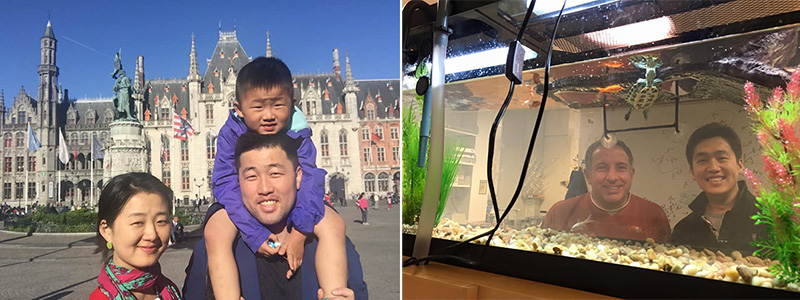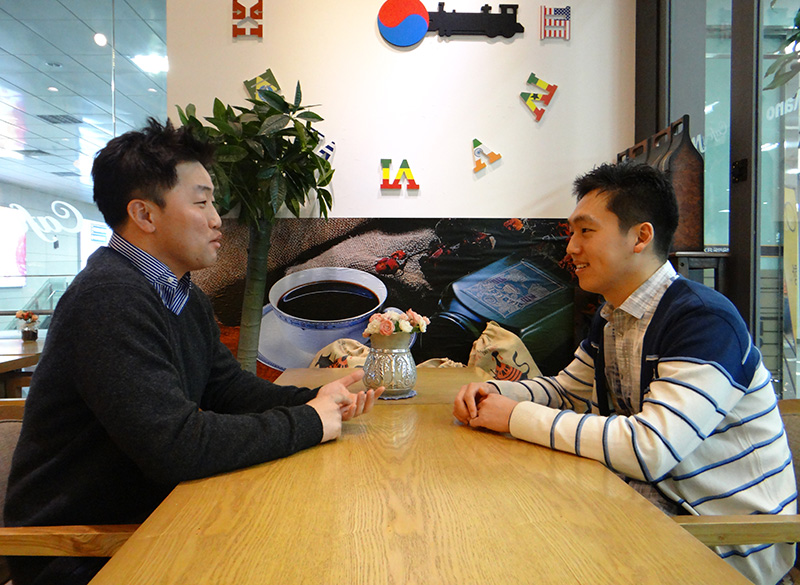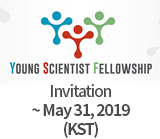주메뉴
- About IBS 연구원소개
-
Research Centers
연구단소개
- Research Outcomes
- Mathematics
- Physics
- Center for Underground Physics
- Center for Theoretical Physics of the Universe(Particle Theory and Cosmology Group)
- Center for Theoretical Physics of the Universe(Cosmology, Gravity and Astroparticle Physics Group)
- Center for Exotic Nuclear Studies
- Dark Matter Axion Group
- Center for Artificial Low Dimensional Electronic Systems
- Center for Theoretical Physics of Complex Systems
- Center for Quantum Nanoscience
- Center for Van der Waals Quantum Solids
- Center for Relativistic Laser Science
- Chemistry
- Life Sciences
- Earth Science
- Interdisciplinary
- Center for Neuroscience Imaging Research(Neuro Technology Group)
- Center for Neuroscience Imaging Research(Cognitive and Computational Neuroscience Group)
- Center for Algorithmic and Robotized Synthesis
- Center for Genome Engineering
- Center for Nanomedicine
- Center for Biomolecular and Cellular Structure
- Center for 2D Quantum Heterostructures
- Center for Quantum Conversion Research
- Institutes
- Korea Virus Research Institute
- News Center 뉴스 센터
- Career 인재초빙
- Living in Korea IBS School-UST
- IBS School 윤리경영


주메뉴
- About IBS
-
Research Centers
- Research Outcomes
- Mathematics
- Physics
- Center for Underground Physics
- Center for Theoretical Physics of the Universe(Particle Theory and Cosmology Group)
- Center for Theoretical Physics of the Universe(Cosmology, Gravity and Astroparticle Physics Group)
- Center for Exotic Nuclear Studies
- Dark Matter Axion Group
- Center for Artificial Low Dimensional Electronic Systems
- Center for Theoretical Physics of Complex Systems
- Center for Quantum Nanoscience
- Center for Van der Waals Quantum Solids
- Center for Relativistic Laser Science
- Chemistry
- Life Sciences
- Earth Science
- Interdisciplinary
- Center for Neuroscience Imaging Research(Neuro Technology Group)
- Center for Neuroscience Imaging Research(Cognitive and Computational Neuroscience Group)
- Center for Algorithmic and Robotized Synthesis
- Center for Genome Engineering
- Center for Nanomedicine
- Center for Biomolecular and Cellular Structure
- Center for 2D Quantum Heterostructures
- Center for Quantum Conversion Research
- Institutes
- Korea Virus Research Institute
- News Center
- Career
- Living in Korea
- IBS School
News Center
| Title | IBS Young Scientist Fellowship, a Stepping Stone to Lead a Creative Research Project | ||||
|---|---|---|---|---|---|
| Name | Department of Communications | Registration Date | 2017-04-28 | Hits | 5697 |
| att. |
 thumb.jpg
thumb.jpg
|
||||
IBS Young Scientist Fellowship, a Stepping Stone to Lead a Creative Research Project- KIM Teun-Teun and PARK Jung-Woo, Young Scientist Fellows - Interview PreviewQ: Both of you were selected as the IBS Young Scientist Fellow. Congratulations on your fellowship. What were some of the reasons that led you to apply? Q: Could you tell us which research outcome you think helped you to become a Young Science Fellow (YSF)? "For researchers at a crossroads, the YS Fellowship is a wonderful opportunity. We are going to continue our research under great conditions, so we feel the need to produce good results. Also, as the first recipients of the Fellowship, we both have strong responsibility." At a café in Seoul Station, research fellows KIM Teun-Teun and PARK Jung-Woo both stressed the importance of responsibility. They started their research earlier than the other five researchers who were also selected as IBS Young Scientist Fellows (YSF). Kim is now working at the IBS Center for Integrated Nanostructure Physics while Park is at the Center for Catalytic Hydrocarbon Functionalizations. The two research fellows shared how they have built their research career and their plans as they take the next step forward as YSF.
Metamaterials, the Ultimate Ingredient for a Cloak of Invisibility and Catalysts, the Matchmaker for ReactionsKim studies metamaterials; known for its possibility of making a cloak of invisibility a reality. Kim, who received his PhD on researching two-dimensional photonic crystals, was fascinated with light and it's no wonder that he was intrigued by metamaterials. "The difference between photonic crystals and metamaterials comes from the size of their structures. While the photonic crystal's wavelength is similar to that of light, metamaterial's wavelength is about 1/5 to 1/10 of that," explained Kim. "As metamaterials can exhibit any values from the effective refractive index, the materials can achieve a negative refraction (phenomenon where incident rays are refracted in the opposite direction compared to the direction it would have refracted on conventional materials) which can contribute in inventing a cloak of invisibility by making a material look as if it doesn't exist." Kim devoted himself to studying metamaterials during his postdoc years with a research team led by Professor MIN Bumki. Conventional metamaterials could control only the intensity of light. To overcome the limitation, Kim focused on the property of different kinds of metamaterials. For example, chiral metamaterials can control the polarization of light, electromagnetically induced transparency (EIT) metamaterials can control the speed of light and the surface of the materials has control over the direction of light. "When synthesizing high-conductivity graphene with metamaterials, we can calibrate the properties of metamaterials," said Kim. "We might succeed in developing an active device that can coordinate the degree of light polarization." With Prof. Min's research team, Kim demonstrated memory metadevices that sustain transformed optical properties of metamaterials and established logic gate metadevices using the demonstrated materials. The study results were published in Nature Communications. Park studies transition metals which are used as catalysts, the matchmaker for biological and chemical reactions. He earned his PhD degree with a thesis entitled Transition-Metal Catalyzed Transformation of Vinylsilane and its Application to Hybrid Materials. "Vinylsilane displays high reactivity with transition metal catalysts," explained Park. "Transition-metal catalysts provide a good way to couple silicon to an alcohol group by activating carbon-silicon bond of vinylsilane. This process can be a convenient way to synthesize highly pure organic-inorganic hybrid materials." Park studied the application of transition metal catalyzed reactions as a postdoctoral researcher, under supervision of professor Vy M. Dong at the University of California, Irvine. He especially investigated the desymmetrization reaction using a carbon-hydrogen bond activation reaction and dehydroformylation reaction. In 2015, Park and the research team were able to develop a method to more easily induce the dehydroformylation reaction using a rhodium compound as a catalyst and published the findings in Science. Dehydroformylation refers to a reaction which eliminates the aldehyde group (-CHO) and synthesizes olefin. With the newly developed method introduced by the research team, the synthesis process of a natural product called yohimbine was reduced down to three stages from the previous eleven stages. Postdoc Experience, the Years that Enriched My LifeKim did his postdoctoral research in the United Kingdom, the birthplace of metamaterials. The inventor of the idea of metamaterials John Pendry is a professor at Imperial College London. . He has been considered for the Nobel Prize for his work in providing theoretical grounds to negative refraction and an invisibility cloak. "I went to the UK for my honeymoon and that's when I visited Imperial College London and had an opportunity to talk to Ortwin Hess, an acclaimed theoretical researcher in the field of metamaterials, over a cup of tea," said Kim. He then became part of the Fostering Next-generation Researchers Program supported by National Research Foundation of Korea (NRF) and began his research at the University of Birmingham in the UK. While working with Professor Shuang Zhang, a respected researcher for his work in metamaterials, Kim applied for a Marie Curie Fellowship. The Fellowship for postdoctoral research is one of the most respected programs in Europe and offers the best conditions, including support for participation in academic forums and hosting workshops. "For both the NRF Program and Marie Curie Fellowship, I was accepted after trying for the second time. The failure taught me lessons that eventually allowed me to seize the opportunity," said Kim. He added, "The UK has a long history of science and is rich with the culture of science. As a scientist, I enjoyed looking into the legacy of great scientists such as Maxwell, Faraday, and Darwin." In 2013, Park attended the 63th Lindau Nobel Laureate Meeting and met great minds in the field of chemistry. "In Lindau, Germany, I met Robert Grubbs and Richard Schrock, both 2005 Nobel Prize winners and Akira Suzuki, recipient of the 2010 Nobel Prize in Chemistry," explained Park. "At that time, I was looking for a postdoc position outside of Korea and the international researchers I met shared lots of information and it was really helpful. I have been keeping in touch with them since." Soon after, Park started working as a postdoc researcher at the University of California, Irvine. That's when he was broadening his research area to application of transition metal catalysts towards organic chemistry and mechanism. While he was a postdoc researcher, he commuted 16 thousand kilometers via his car in just three years. "My wife was accepted to a postdoc research program at the UCLA before me, so I had to commute 80 kilometers every day to Irvine. That is unforgettable," explained Park. "It wasn't easy driving all that distance, but the group offered an open research environment where researchers could freely debate over topics while writing on whiteboards, and that compensated for the trouble," he reminisced.
From Competitive Campus Life and Graduate School Years to Making Dreams Come TrueInterestingly enough, Kim and Park both graduated university early. Kim got a degree in physics at Chosun University on a full scholarship within just three and a half years. "In high school, circumstances didn't allow me to focus solely on academics. From day one of university, I devoted all my energy to getting into the Korea Advanced Institute of Science and Technology (KAIST) graduate school," explained Kim. "My day started at 6 in the morning in the campus building. You could always find me either in the school library, physics department office, or in the room for student clubs." The endeavor made him the first person to graduate early in the history of Chosun University. He then entered KAIST for a graduate program. In the first semester, he chose photonic crystals and metamaterials as his specialty, wanting to control light. Park completed Yonsei University and got a bachelor degree in chemistry within three years. "I participated in the Chemistry Olympiad when I was a high school kid and fell in love with organic chemistry," said Park. "The Olympiad demanded college-level chemistry knowledge and building on what I've learned, I could take more advanced classes." In the summer of his first year of university, he joined the research lab led by Professor JUN Chul-ho, a Ph.D supervisor. "I experienced the life of a researcher when I was a freshman and it was a great opportunity for me. It is all thanks to Prof. Jun who noticed my passion for chemistry," said Park. Their fascination with research grew even more as they completed PhDs and went into postdoctoral programs, and that fascination has led them to be selected for the IBS YS Fellowship. Working at the Center for Integrated Nanostructure Physics, Kim plans to create a new device by applying research on metamaterials to two-dimensional materials, including graphene. "Unlike electrons, light shows a high level of scattering and loss. However, it can be reduced if we can bring metamaterials into their full potential by taking advantage of EIT phenomenon, optical retardation, etc.," he explained. "When the findings become applicable to two-dimensional materials, we will be able to build not only optical devices but also optical integrated circuits." He added, "Using the Center's electro-etch equipment that allows manufacturing at a nanoscale, synthetic equipment for two-dimensional materials, and near field measuring system, among others, metamaterials can be applied to even visible or near-infrared ray." Park plans to fully dedicate himself to research on the application of transition metal catalysts at the Center for Catalytic Hydrocarbon Functionalizations. "I want to design a more affordable transition metal catalyst and engineer an complex natural product-based molecules by achieving multiple functionalization with one reaction," he explained. "Developing new methods for diverse chiral silicon materials using a stereoselective method is also one of my plans." The two research fellows also expressed their ambitions as researchers. Kim said, "My moto is 'Things are expected not to work, but let's make them work.' I want to stay passionate and explore new horizons with original ideas." Park also said, "I want to be a good mentor for new researchers and contribute to the field of chemistry with my work." The IBS YS Fellowship aims to serve as a stepping stone in leading them to the successful achievement of their goals.
|
|||||
| Next | |
|---|---|
| before |
- Content Manager
- Public Relations Team : Yim Ji Yeob 042-878-8173
- Last Update 2023-11-28 14:20














